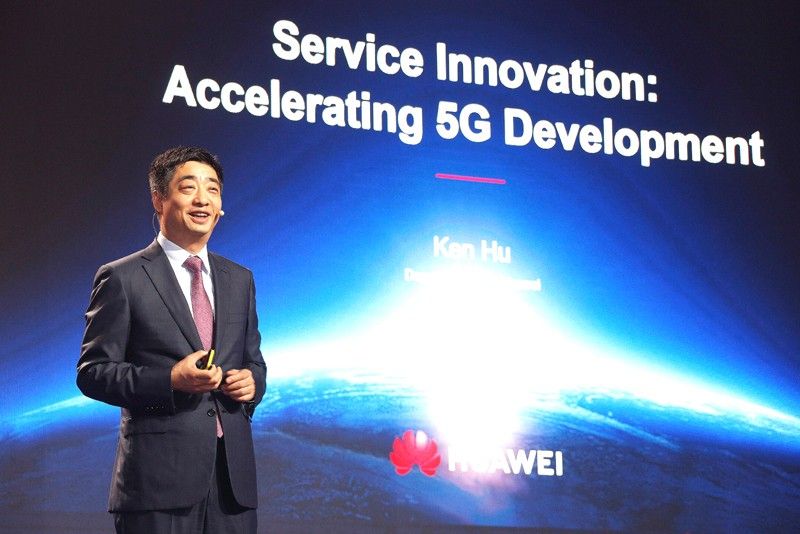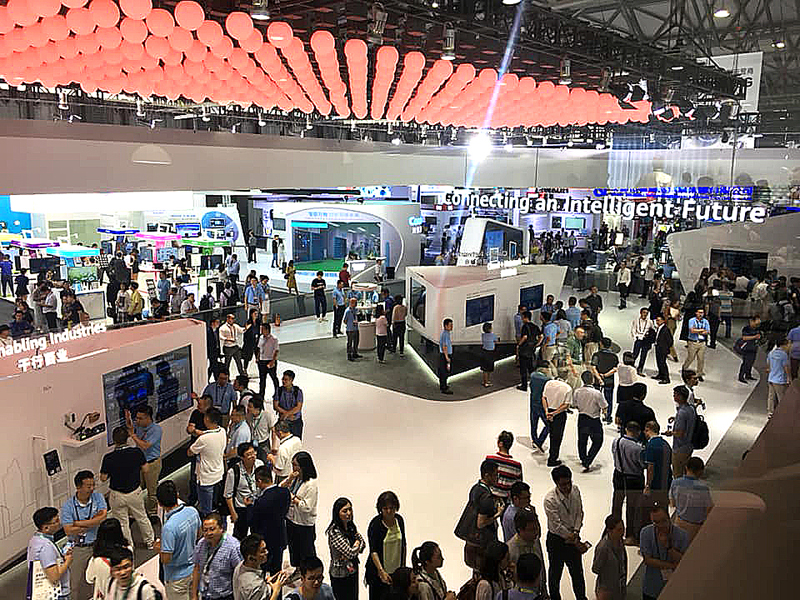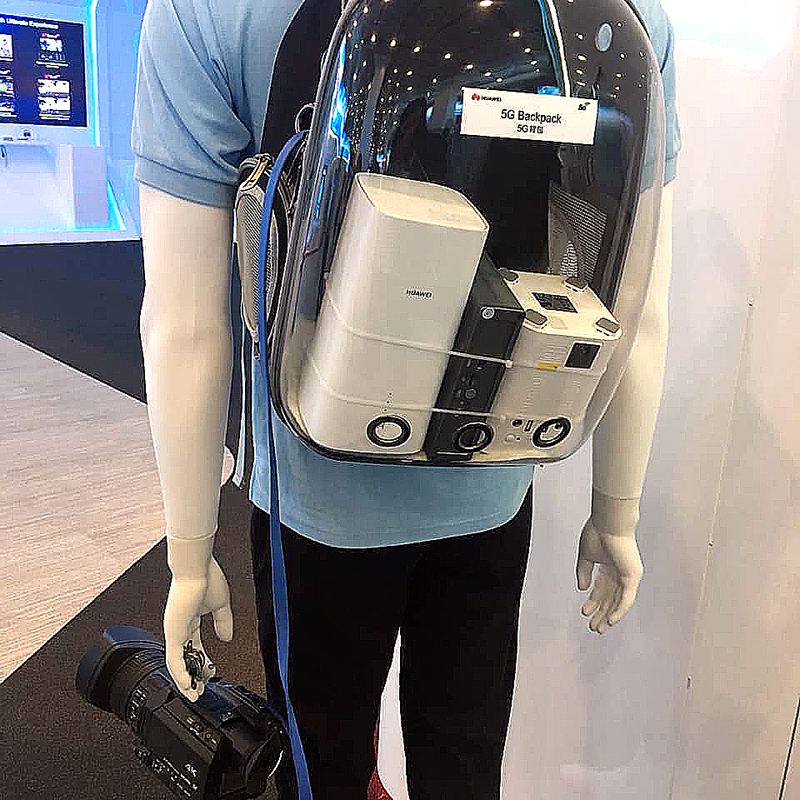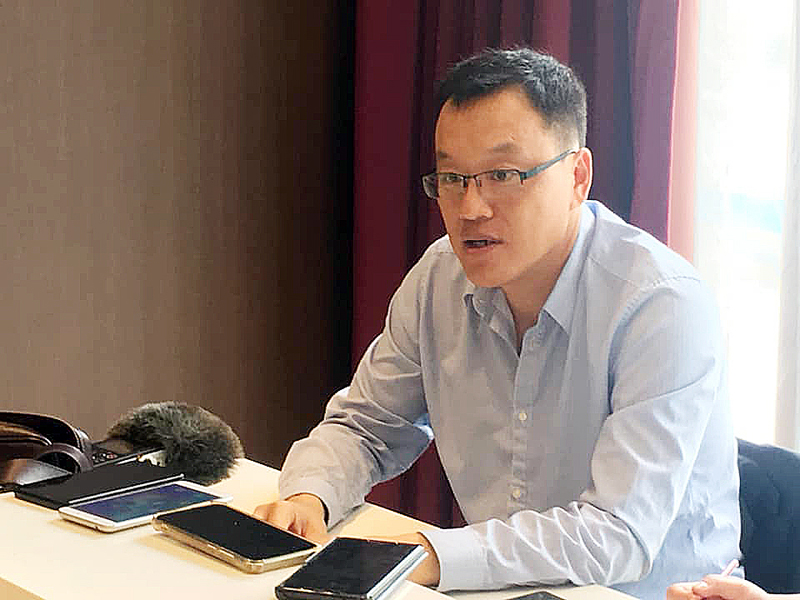5G is on for Huawei

‘5G will change the world,’ said Ken Hu, deputy chair, Huawei Technologies
MANILA, Philippines — 2019 is officially the year for 5G. Fifth generation or 5G is taking off and set to become part of people’s daily lives. It is on everyone’s mouth right now, making the entire tech industry shaking with excitement.
At the recent Mobile World Congress (MWC) 2019 in Shanghai, China, visitors got to experience the uses that 5G innovation brings. It was the first MWC event to offer 5G commercial services, supporting the event’s theme of Intelligent Connectivity.
The event showcased how the exhibitors have made 5G a reality and how intelligent connectivity enabled by 5G is impacting positively on users, businesses, different industries, and the economy across the regions. Exhibitors demonstrated their latest 5G equipment, from smart phones to base stations. Other highlights included 5G services, self-driving cars, a 5G mirror, and even an 8K 360-degree VR experience.
One of those exhibitors was Huawei Technologies, one of the world’s leading providers of information and communications technology infrastructure and smart devices.
During the event, Huawei deputy chair Ken Hu gave an update on Huawei’s progress in 5G deployment, sharing concrete examples of how service innovation and cross-industry collaboration are driving the next phase of growth in 5G.

Huawei booth at the MWC Shanghai 2019
“The future of 5G development will rely heavily on services, 5G-enabled service innovation will help us push network performance to the next level, and help operators get great returns on their investments,” he said.
To date, Huawei has signed 50 commercial contracts for 5G around the world and have shipped 150,000 5G base stations. While operators from around the world are racing to deploy their 5G networks, China has already officially issued its 5G licenses as early as last month — marking the beginning of 5G commercialization in the world’s largest mobile communications market.
A result of 10 years of research and development
Huawei started researching and developing 5G 10 years ago. At that time, 5G was only a concept with no standards to speak of so they had to start from scratch. Since then, Huawei has contributed a lot to the standards, concept and architecture of 5G.
In those 10 years, the company invested heavily on 5G totaling $4 billion. The investment eventually paid off as it helped them get ahead. They are the leaders in the technology side and in the standard contribution side.
As a company, Huawei now holds more than 2,500 standard essential patents for 5G — roughly 20 percent of all 5G patents in the world.
“But innovation isn’t just about technology. Part of our success is our focus on making 5G easier to operate, more affordable, and simpler to deploy,” Hu adds.
The 5G base stations outperforms that of the 4G ones by a factor of 20. They are lighter, smaller, easier and faster to deploy and assemble as it will only take two technicians two hours.
Uses of 5G in various industries
“5G will change the world,” said Hu.
Presently, the broadcast media industry uses microwave or satellite to transmit live broadcasts, often with massive broadcast trucks onsite. With 5G, it will change how media normally does their live reporting through a 5G backpack and a 5G CPE. The backpack is light and small, and can be placed anywhere the crew needs it. It is completely plug-and-play, requiring no set-up time — just throw it in a bag and set up wireless cameras wherever you need them.

The 5G backpack will change how media industries broadcast live reports.
The 5G innovations can also be used for industries and jobs that are considered dangerous such as mining and inspecting power lines. Inspecting power lines is a risky manual process, requiring inspectors to check on these personally. In addition, the inspector inspects only a maximum of four kilometers of power lines in a day. But with a 5G-connected drone, power companies can fly drones remotely over the power lines while sending live HD videos to the centralized command center. These drones can inspect 15 kilometers of power lines per day — making the whole process more efficient and safer.
In mining industries, drivers have to maneuver trucks back and forth across a chaotic mining site, making the frequency of accidents high. But with 5G networks and modules, driverless trucks plowing through the site safely and efficiently can be achieved. No driver will have to be subjected to dangerous working conditions again.
Smart and safe cities
In Huawei’s headquarters in Shenzhen, they have exhibited the wide application of 5G, ranging from smart cities, banking and finance, transportation, government services, and the like. Through 5G and 5G-enabled technologies, smart cities can be created through the Internet of Things (IoT), a network of devices that are interconnected with each other and exchanging data.
CCTVs, traffic surveillance cameras, streetlights, parking lots, and garbage bins can be connected to the IoT and turned into smart devices. The data gathered from these devices will be gathered and sent to the centralized command center in real time. There are numerous ways wherein the technology can be used to the advantage of the government and its citizens. For example, traffic surveillance cameras can help determine traffic jams in the city. The data is sent to the command center and the proper authorities can carry out the necessary actions to resolve the traffic situation swiftly.
As a continent, Asia is prone to experiencing extreme weather conditions. After typhoons, floods normally follow. The data collected from the smart devices can help the government determine which areas are the most heavily affected and in need of their immediate assistance. With the rise of environmentally conscious initiatives, another example where this technology could be useful is in proper waste disposal. The devices would determine the weight or amount of recyclable trash that is inside specialized trash disposal bins. Information from these bins would help the city and its people in improving its green initiatives.
Embracing 5G innovations in the Philippines
Globe Telecom launched Southeast Asia’s first 5G broadband service, in partnership with Huawei Technologies, who provided the equipment for it. Filipino consumers are some of the world’s top social media users, yet the internet speed in the country only reaches 19.55 megabits per second (Mbps) versus the global average of 59.6 Mbps.
In a round-table discussion with Filipino reporters attending the MWC Shanghai 2019, Daniel Guo Zhi, vice president and COO of Huawei Technologies Philippines, stressed that the country needs to work double-time in order for it to be at par with other Asian countries that have already launched their own 5G networks.
“For the Philippines to fully embrace 5G and enjoy its many potentials, it must first lay down the backbone, the foundation of 5G. 4G is technically a highway via air or microwaves. With 5G, it is a highway information underground. It relies on fiber optics technology, which is faster and more efficient than microwave technology,” he said.

Daniel Guo Zhi, vice president and COO of Huawei Technologies Philippines, sits down with reporters from the Philippines attending the MWC Shanghai 2019.
The lack of this particular backbone means that it may take some time for the country to fully utilize 5G. Guo added that 5G deployment in the Philippines will initially focus in the National Capital Region (NCR) since the infrastructure to host the 5G network is already available.
“Our focus is to help people benefit from the digital transformation. We are trying to help operators — we are working with them — to improve the telecom services in the Philippines so that Filipinos can benefit from the low-cost and highly efficient network experience,” he said.
With the extensive research and development, and investments Huawei has made for 5G, it should not be a surprise that many operators choose to work with them. And when asked how 5G will ultimately benefit Filipinos, he answered, “In the most simple description, 5G in the Philippines would make things faster, easier, and cheaper to all Filipinos. As applications would work on 5G, Filipinos will save time and effort as they go about their lives under the IoT.”
- Latest




























